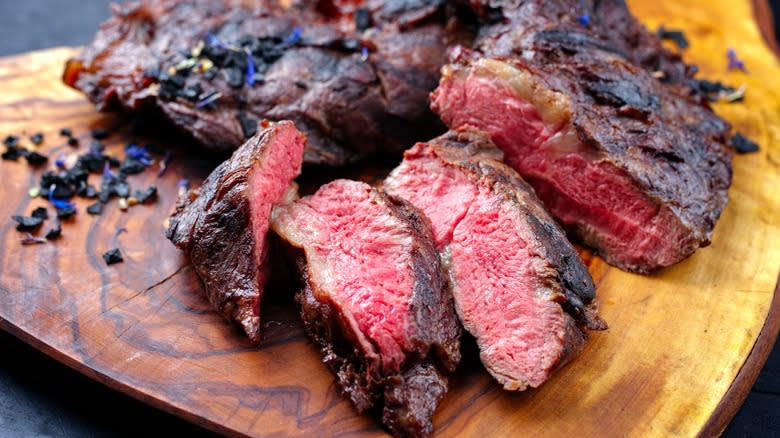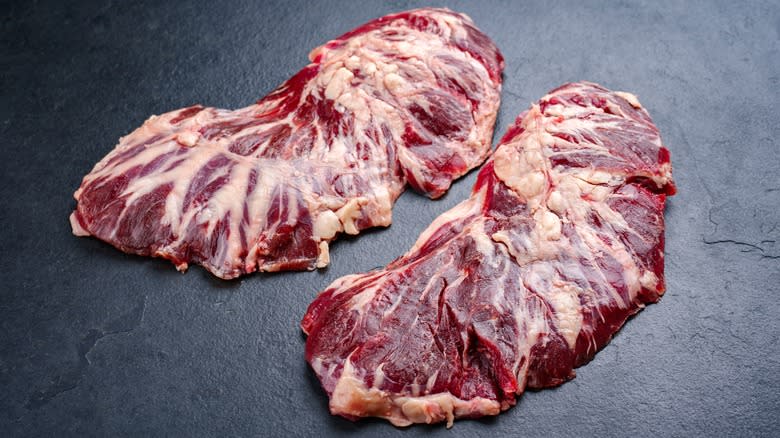Oyster Steak Is A Cut Of Beef Everyone Should Try

A big part of the joy of food is the act of discovery, and one of the most surprising things you can find is a cut of steak you've never heard of before. Most slices of beef are household names in America. Porterhouse, flank, New York strip — even if you don't know what these cuts of steak actually are, you've heard the names. So when someone starts throwing around a name you've never heard before, you're intrigued. Did they invent a new part of the cow?
The reality, of course, is that cutting beef actually gives people creative leeway for where to slice, and there are also rare or less-wanted cuts that are popular regionally but take time to find a mainstream audience that prefers to stick to the classics. But underrated cuts of meat are always worth a try, and an oyster steak should be proof of that.
The oyster steak is also called a spider steak, but its American name comes from its shape, which resembles the meat of an oyster. It's a rare cut because it comes from a very specific part of the cow, inside the hip of the animal's rear legs, meaning there are only two oyster steaks per cow. It looks like a tangled web of muscle and fat strands, hence the spider name, and it comes from a part of the cow that doesn't do too much work. If you know your steak cuts, you know that combo is a recipe for deliciousness.
Read more: The Most Popular Cuts Of Steak Ranked Worst To Best
Oyster Steaks Are Rare Cuts That Are Both Tender And Fatty

Because of oyster steaks' location and well-distributed mixture of fat, they are tender, rich, and flavorful — the great steak trifecta. However, the shape means that they can be small, sometimes three to four ounces, and thin. That means that, even with the fat, they are susceptible to overcooking. If you do manage to score an oyster steak, the way to cook it is quickly over high heat. You'll save the tender meat while getting some nice browning on the outside, and the fat will keep everything juicy.
You can do this with a hard sear over a smoking cast-iron pan, in a broiler, or over high, direct heat on a grill. As a small steak, it should be done cooking quickly, roughly three minutes per side. Because of the flavor and richness of oyster steaks, the best way to sample them the first time is just with salt and pepper. Cooked properly, they shouldn't need anything else to be delicious.
If you want to plus up an oyster steak up, it's best to do so with simple sauces and rubs that still highlight the wonderful beefy taste of the cut. A side of basic horseradish sauce will add a nice bite to keep things lively, or you can drizzle on an herbal chimichurri for some fresh flavors to balance out the rich meat. Just don't get too complicated, oyster steaks are a rare cut that you want to savor.
Read the original article on Tasting Table.

 Yahoo Lifestyle
Yahoo Lifestyle 
